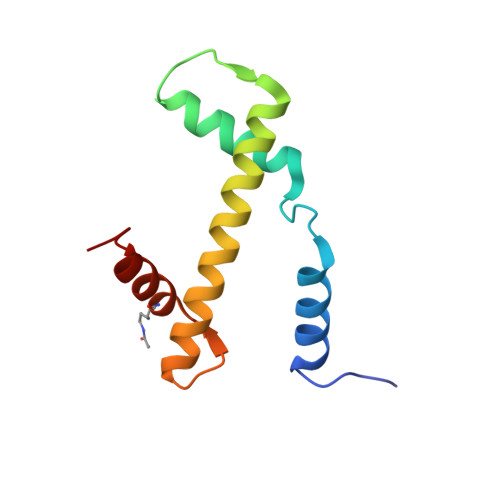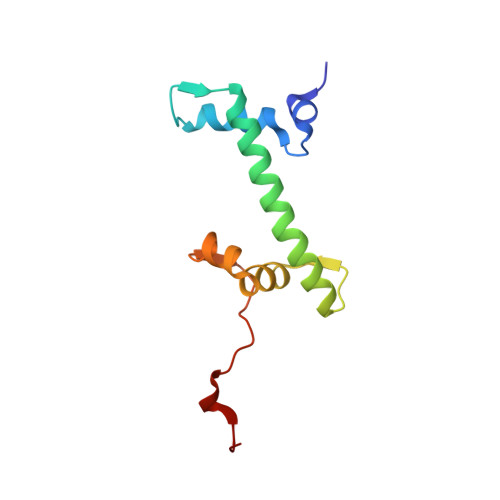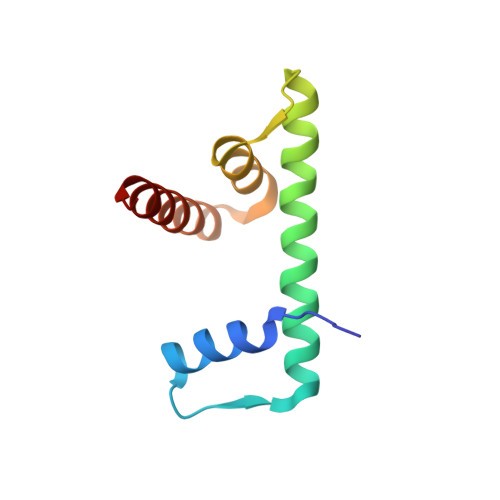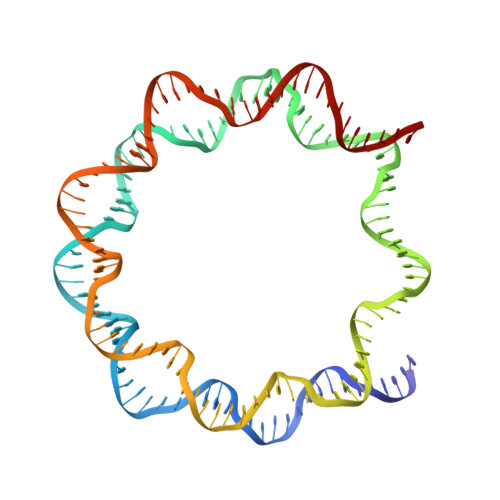Histone Acetylation near the Nucleosome Dyad Axis Enhances Nucleosome Disassembly by RSC and SWI/SNF.
Chatterjee, N., North, J.A., Dechassa, M.L., Manohar, M., Prasad, R., Luger, K., Ottesen, J.J., Poirier, M.G., Bartholomew, B.(2015) Mol Cell Biol 35: 4083-4092
- PubMed: 26416878
- DOI: https://doi.org/10.1128/MCB.00441-15
- Primary Citation of Related Structures:
4XZQ, 4YS3, 4Z66 - PubMed Abstract:
Signaling associated with transcription activation occurs through posttranslational modification of histones and is best exemplified by lysine acetylation. Lysines are acetylated in histone tails and the core domain/lateral surface of histone octamers. While acetylated lysines in histone tails are frequently recognized by other factors referred to as "readers," which promote transcription, the mechanistic role of the modifications in the lateral surface of the histone octamer remains unclear. By using X-ray crystallography, we found that acetylated lysines 115 and 122 in histone H3 are solvent accessible, but in biochemical assays they appear not to interact with the bromodomains of SWI/SNF and RSC to enhance recruitment or nucleosome mobilization, as previously shown for acetylated lysines in H3 histone tails. Instead, we found that acetylation of lysines 115 and 122 increases the predisposition of nucleosomes for disassembly by SWI/SNF and RSC up to 7-fold, independent of bromodomains, and only in conjunction with contiguous nucleosomes. Thus, in combination with SWI/SNF and RSC, acetylation of lateral surface lysines in the histone octamer serves as a crucial regulator of nucleosomal dynamics distinct from the histone code readers and writers.
Organizational Affiliation:
Department of Epigenetics and Molecular Carcinogenesis, UT M. D. Anderson Cancer Center, Smithville, Texas, USA.




















